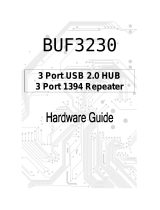1
At Antec, we continually refine and improve our products to ensure the highest
quality. It’s possible that your new case will differ slightly from the descriptions
in this manual. This isn’t a problem; it’s simply an improvement. As of the date of
publication, all features, descriptions, and illustrations in this manual are correct.
New Solution Series User’s Manual
NSK 3480
Quiet microATX Case
The NSK3480 Case with EA-380 power supply
The NSK3480 comes with an EarthWatts 380 watt PSU. Universal input, active
PFC single 80mm fan cooled power supply that follows the ATX12V version 2.2
specifications. This includes dual +12V output rails that deliver safer and more
reliable output to your system’s components. Featuring higher energy efficiency,
which reduces power consumption by up to 25%, saving you money on your
electricity bill. EarthWatts power supplies have achieved 80 PLUS® Certification,
the latest independent standard in power supply efficiency. In addition EarthWatts
includes a variety of protective circuitry: OPP (over power protection), OVP (over
voltage protection), and SCP (short circuit protection).
This power supply is backwards compatible with previous ATX form factor power
supplies. To make sure you connect the power supply properly, please refer to the
user manuals supplied with the motherboard and peripherals before connecting any
of them to the power supply.
The power supply comes with a main power switch. Make sure you turn the
switch to the ON (I) position before you boot up the computer for the first time.
Normally, you won’t need to switch to the OFF (O) position, since the power sup-
ply includes a soft on/off feature. This lets you turn the computer on and off by
using the soft switch on the computer case. If the computer crashes and you can’t
shut it down using the soft switch, you can switch the main power to the OFF (O)
position, to clear the fault, then reboot.
Antec power supply models feature Power Factor Correction (PFC) circuitry in
accordance with European standard regulation code EN61000-3-2. By altering the
input current wave shape, PFC improves the power factor of the PSU. A better
Power Factor increases energy efficiency, reduces heat, improves output voltage
stability and prolongs the life of your equipment. The PSU’s high efficiency design
and quiet fan deliver not only a cleaner but also a quieter operating environment.
The Dual Chamber Structure
The case is divided into two chambers. The motherboard chamber and the power
supply chamber are separated from each other for maximum quiet and optimal
cooling.
Disclaimer
This manual is intended only as a guide for Antec’s Computer Enclosures. For more
comprehensive instructions on installing the motherboard and peripherals, please
refer to the user’s manuals that come with those components.









